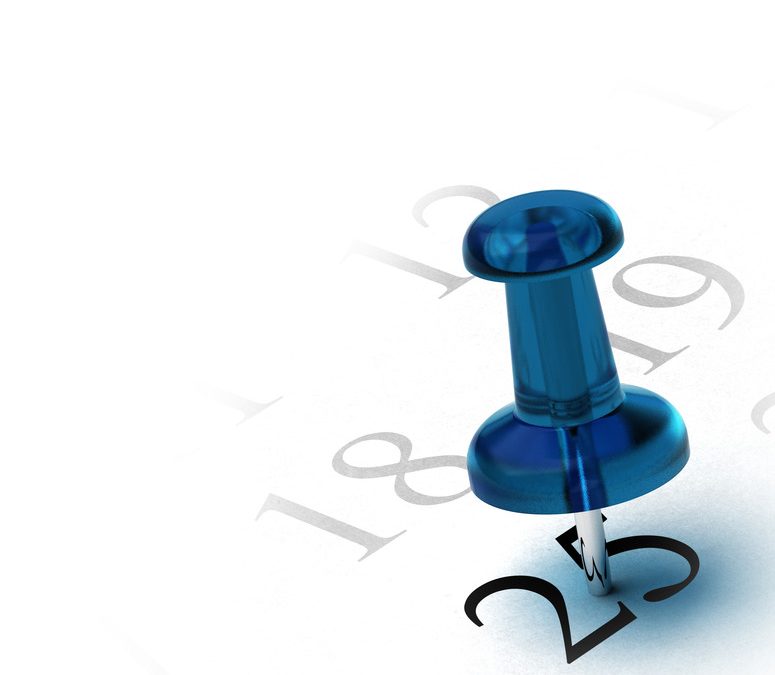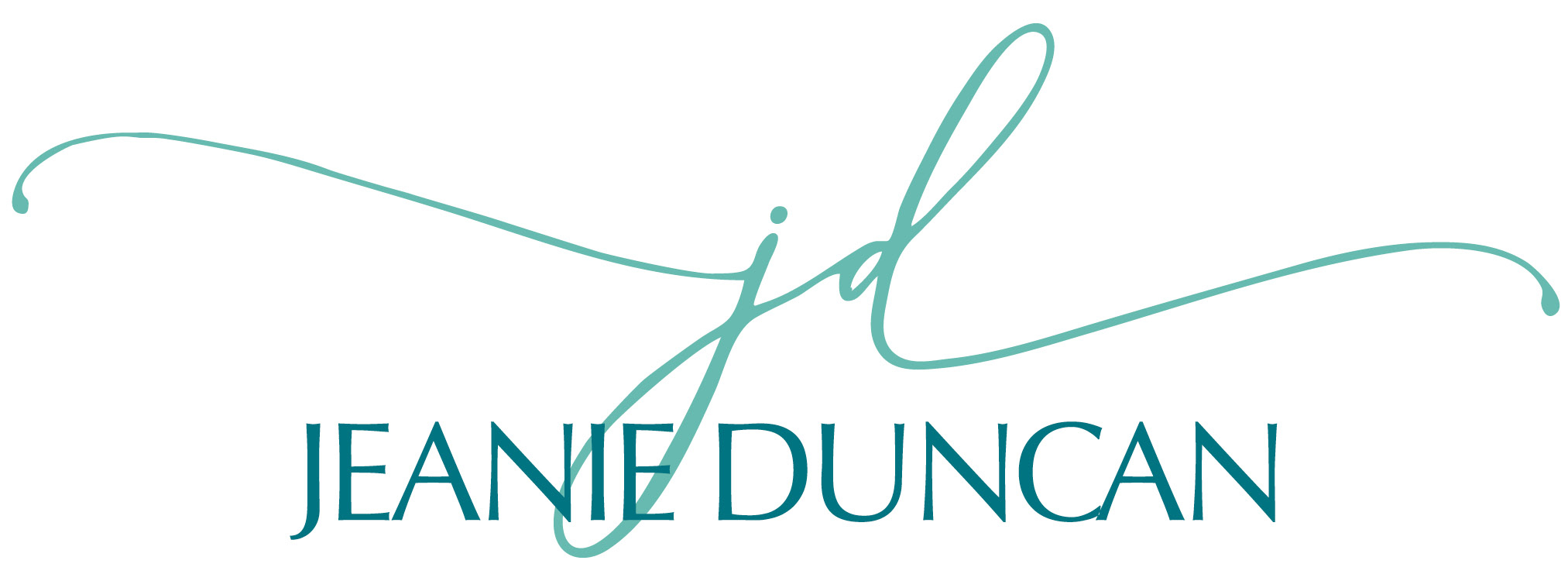
Jul 29, 2014 | Strategy
I’m struggling with my ability to focus today. As in – ‘there are so many priorities, and they all seem like they’re #1.’ Ever experience this challenge?
 When I find myself in this place, the best thing I can do is sort the priorities. If they’re all #1, I find a way to divide them 1A, 1B, 1C. Even when I think they’re the same level of priority and urgency, this helps me differentiate to some degree. This way, I take the 20-headed beast down to 5 heads, focusing now on the top 5 things I must accomplish – in an hour, a day, or a week. Yes, the other 15 things are important too, but they’ll have to take 2nd place for now. Because if there are 20 priorities at once, I know what will happen – I become paralyzed and do nothing, or I fall into a spin and do a little bit with all the items and get little accomplished. In the most busy and pressing times, I do this exercise each day or even twice a day.
When I find myself in this place, the best thing I can do is sort the priorities. If they’re all #1, I find a way to divide them 1A, 1B, 1C. Even when I think they’re the same level of priority and urgency, this helps me differentiate to some degree. This way, I take the 20-headed beast down to 5 heads, focusing now on the top 5 things I must accomplish – in an hour, a day, or a week. Yes, the other 15 things are important too, but they’ll have to take 2nd place for now. Because if there are 20 priorities at once, I know what will happen – I become paralyzed and do nothing, or I fall into a spin and do a little bit with all the items and get little accomplished. In the most busy and pressing times, I do this exercise each day or even twice a day.
This place of ‘everything is a priority’ leads us into the trap of pressing harder, faster, and with greater intensity to try and accomplish everything or achieve a particular unrealistic goal or deadline.
I somehow trick myself into thinking that working harder and doing more is what’s needed to get the job done. Intellectually, I can rationalize the truth in this. But, at a deeper level, I realize that intense effort and pace often depletes my energy, can adversely impact my output, and removes the joy from my work.
To help combat this tendency, I have adopted some practices I find beneficial and that have helped me most:
- Spend the first hour of the day setting priorities and getting organized. It’s easy to launch into the day reacting to the urgent – the rain of emails, interruptions from co-workers, and the barrage of phone calls – rather than advancing the important. I like to get an early start to the day and establish priorities. I begin with the question: “What are the three most important things I need to accomplish today to advance my key goals?” Everything else is a “nice to have.” These three daily priorities all roll up to support my weekly, monthly, and quarterly goals.
- Focus on the important tasks first. Once I frame my day in the first hour, I immediately set out to accomplish the top three priorities before distractions have a chance to pull me away. If I can’t take care of them all, I’ll make an appointment on my calendar to return to it later in the day.
- Single-Task. When I’m doing too much, I’m constantly switching from one task to another, experiencing multiple interruptions and distractions. Despite our culture’s demand to multi-task, resist the temptation, clear away distractions, and give attention to the single matter that is most important.
- Eliminate non-essential commitments. Examine your day or week and ask yourself: “What can I eliminate or delegate? Is that task, meeting, or luncheon something that I absolutely must do? How does it advance my strategic goals?” I try and say no to any request that distracts me from focusing on what’s most important. I think of it as focusing on my highest and best use.
- Step away and take a break. We all have those occasions when work calls for added effort. But more often than not, simply stepping away and taking a break – like going for a run or having lunch in a park – can infuse new energy, bring fresh perspective and new ideas, and actually enhance productivity.
- Ask key questions. Another tactic I find helpful is pausing to ask a few critical questions to help me determine priorities or my approach as I begin a particular project or task. It’s an important skill for anyone focused on improving performance, and it can help filter through all the distractions and get to the one thing that will deliver the result. For example:
- How important is this?
- What do I want?
- Why?
- How will I know when I achieve it?
- What can I do to achieve that outcome?
- What can I learn from others who have gone before me?
- What do I bring from prior experiences that can help inform my present situation?
Challenge yourself this week to do less, focus on what’s most important and will deliver the greatest impact, and discover deeper meaning and success in your work. Notice what happens!
“Don’t mistake activity with achievement.” ~ John Wooden
Jeanie is President of Raven Consulting Group, a business she founded that focuses on organizational change and leadership development in the nonprofit sector. She is a senior consultant for Raffa PC (formerly TransitionGuides), a national firm working with nonprofit clients to lead efforts in sustainability and succession planning, executive transition and search. Additionally, Jeanie serves as adjunct faculty for the Center for Creative Leadership, a top-ranked, global provider of executive leadership education.
photo credit: modenadude via photopin cc

Jun 24, 2014 | Courage, Intention

I have not been able to move – not one square inch – on my social media strategy. I have the most beautiful plan on paper…Really! You would be so impressed. But mostly, it just sits there.
And because I’ve had this condition for quite some time, I’ve given a lot of thought to the “why” and to “how” to overcome my procrastination.
Why my paralysis:
- My plan is complex and broad and presents me with tremendous self-applied performance pressure.
- I’m putting myself out there on the public stage, so my work must be perfectly brilliant and thought provoking, conveying wisdom and clearly articulated, intelligent thoughts.
- My dazzling strategy centers on my writing and posting a blog piece every week. Arrrgh the pressure! (see #2 above) All the other platform postings flow from this piece and from each month’s theme.
- With my business, I am it…the sole practitioner. So, when business is rolling (and thankfully it often is), I am really busy and find it hard impossible to make time to write, tweet, and post on Facebook and LinkedIn.
- Therefore, about #4, I think: “If I can’t find time to write and be present on these sites, do my prospective clients find the time?” Doubt creeps in regarding the value of planning and executing this strategy. Why write and post these amazing pieces of art and intellect when my target audience is too busy (or doesn’t care) to even read the stuff.
Moving to Action:
So, I ask myself: “How important is it to me to execute my social media strategy? My short response is “It’s really important…a 10 even!” I have the plan (did I tell you how brilliant it is?). I want to do this. I’m decent at writing. I’ve had good results from it previously (even with what little I’ve done), and many of my colleagues report impressive outcomes (the good ol’ ‘everyone else is doing it’).
How do I get off center and come alive? I’m not really sure, because nothing I’ve attempted has worked. But here’s what I’m going to try starting today:
- What would it be like if I gave myself a break? Simplify the complex, detailed plan into ‘bite size’ pieces. Instead of the pressure to execute fully and perfectly, be okay with some small, consistent steps.
- Send “the judge” on vacation.
- Quit talking about it and do it. Schedule time in realistic increments, like 15–20 minutes.
- Reframe. I’ve learned a lot from my life experiences and have access to a deep inventory of resources. Think of this as a gift of sharing rich assets with others.
- Write! Post!
- Hold myself to it and maybe enroll an accountability partner.
- Measure and acknowledge how it goes for a week or two.
- Celebrate!
- Repeat.
- And if this doesn’t go well, I can always look to other options, like hiring a ghostwriter or virtual assistant to help me.
I’m getting started today, and we’ll see how it goes. I’m hopeful!
Meanwhile, I’d love to hear from you – how do you overcome a stall and move into action?

Mar 25, 2014 | Intention, Leadership

A few years ago while conducting research around starting my own business, I ran across a book I really enjoyed called “Birthing the Elephant” by Karin Abarbanel and Bruce Freeman. From it, came a favorite quote of mine: “Act as if.”
Presented in the context of being an entrepreneur, the short phrase expresses the concept of viewing yourself in a new way and aligning your actions and the way you communicate to reflect this new ‘brand’ and self image. “Actions change attitudes, motions change emotions, and movements change moods. You might not be able to change your thoughts and your feelings, but you can change your actions. Your actions can change your feelings; your actions can change your thoughts. You can act differently than you feel.”
The day I read page 121 and the words “act as if” is the day I decided to begin my business. For several months, I had conducted research around launching a new venture, secured necessary resources, and written a business plan. On paper, it looked great, and when I read the words “act as if,” I thought “what am I waiting for?” It’s interesting when you’re starting something from scratch. There’s a moment when you literally must flip the switch. So I did.
The quote “act as if” hit home for me. In that moment, I took on the mantle of entrepreneur and business owner – I walked as if, ate as if, slept as if…I went about my day as if this is completely who I am, even though early on there were many days where it felt more like a story than reality. I lived this new brand as if everything in my life up to this moment had prepared me for this.
It’s three years later and – through much hard work and many challenges, along with steady progress and great wins – my business is flourishing.
Today, in my coaching and consulting practice, I encourage individuals, teams, and organizations to “act as if” with their vision, mission, and plan. I encourage people and organizations to dream and imagine their most vibrant future. And with that, I challenge them to act as if they’re already there. After all, our thoughts and actions create our reality. We manifest what we most desire and focus on.
My hope is that this mantra will inspire my clients and those I serve as much as it has me. And that they will overcome the one thing that holds most of us back: the belief that we must wait until we know who we are or until we craft the perfect plan before we even get started. Just remember, you’re more ready than you think you are. Get started now.
Act as if what you do makes a difference. It does.
~ William James

May 10, 2013 | Intention, Uncategorized

Ok. Seriously. I’m laying in my back yard hammock for a few minutes this morning (yes, it’s a work day…Friday). And, I can’t deny that I’m feeling guilty for doing it. I have a mound of work to complete. But, I’m trying to practice what I preach with my “Do Less. Achieve More.” post last Sunday. So, here’s a brief highlight of my experience this week in practicing those tips!
– Focus on the important tasks first. At the beginning of every day – and sometimes the night before – I spent 30-60 minutes getting my game plan set for the day. I can’t tell you what a huge difference this made. Knowing the top 3 things that MUST get done kept me razor-sharp focused. Most days, I accomplished those priorities before lunch. It helped me: say no to a lot of things, let my phone go to voicemail, and check email later (and far less frequently). Those micro interruptions are tempting, powerful derailers!
– Single-tasking. This was one of my greatest areas of practice this week. And what a difference it made! One exercise I tried was walking away from my computer and other distractions while on the phone with clients, friends, and family. I intently focused on my “subject” and our conversation. The outcome? I really ‘heard’ what they had to say. Imagine that! I was focused, engaged, and the call was often shorter because of it. And more meaningful. I’ll bet they noticed too.
– Eliminate non-essential commitments. I’m a natural-born networker and relationship builder. I both love it and hate it. I am attracted to invitations to lunch, coffee, wine, etc. like a mosquito to one of those bug lanterns. Before I know it, I can meet with people all day long and have nothing to show for it at five o’clock except great conversation and a small stack of business cards. This week, I found myself more mindful and purposeful as I said yes – and no – to such invitations. Dare I say, I was far more “strategic.” For me, it’s absolutely critical to be discriminating in choosing whether or not to commit to these engagements. By doing so, I focus my time and energy on what’s most important and matters most to my goal achievement.
 – Step away and take a break. See? I’m doing that right now! Even if only for a few minutes – relaxing in a hammock, shooting a few hoops with my son, walking around the block, or going for a quick noon-time run – the brief respite gives me volumes of energy and joy in exercising my choice (remember that?) to just breathe and enjoy a few moments of “me” time. I return to my work and can perform it better, faster, and with a fresh perspective and ideas I wouldn’t have had otherwise. Try it! Seriously. (And stop making up the story you tell yourself: “I don’t have time.” Because you do.)
– Step away and take a break. See? I’m doing that right now! Even if only for a few minutes – relaxing in a hammock, shooting a few hoops with my son, walking around the block, or going for a quick noon-time run – the brief respite gives me volumes of energy and joy in exercising my choice (remember that?) to just breathe and enjoy a few moments of “me” time. I return to my work and can perform it better, faster, and with a fresh perspective and ideas I wouldn’t have had otherwise. Try it! Seriously. (And stop making up the story you tell yourself: “I don’t have time.” Because you do.)
I’ve had fun with this “Do Less. Achieve More.” theme this week. Talk about immediate gratification! A little practice went a long way in delivering some powerful results. What’s working for you?
~ ~ ~
Jeanie is President of Raven Consulting Group, a business she founded that focuses on organizational change and leadership development in the nonprofit sector. She is a senior consultant for TransitionGuides, a national firm working with nonprofit clients to lead efforts in sustainability and succession planning, executive transition and search. Additionally, Jeanie serves as adjunct faculty for the Center for Creative Leadership, a top-ranked, global provider of executive leadership education.

Nov 10, 2012 | Creativity, Management
 About a month ago, I started putting an appointment on my calendar each week called “Time to Think.” Don’t laugh. Stay with me for three minutes…
About a month ago, I started putting an appointment on my calendar each week called “Time to Think.” Don’t laugh. Stay with me for three minutes…
When do you make time to just think? Devoting dedicated, uninterrupted time to think about your business strategy, debrief learnings about a recent project, or assess progress and refine your plans? Maybe you can relate – I get so wrapped up in my day-to-day and the “doing” of my work, that time to plan and strategize often gets pushed aside.
So I decided to make a weekly two-hour appointment to reflect over the last week and look ahead to the next. I ask myself a series of questions, like: What went well? What can I leverage to produce even greater results? What didn’t go well, and why? What brought me the most joy in my work? And on the contrary, what gave me the biggest headache?
In just four weeks, this “thinking” appointment actually seems to expand time. I thought it would be so hard to dedicate the time and stick with it. I was sure that client projects and priorities would override this new commitment and I’d fall off. And that the anticipated benefit would turn out to be fluff. Not true! I’ve experienced immediate, powerful benefits.
– Before, I never stopped to examine all that I actually accomplish in a week. Probably like you, I move quickly from one thing to the next, and it all blends together. This new commitment has taught me that taking the time to reflect (and also to celebrate the “wins”) is meaningful and has a direct, positive impact on my business and on me personally.
– By simply paying attention, I’m noticing things and becoming more efficient. I’ve outsourced or eliminated tasks and changed the way I prioritize and invest in what matters most. Its as if I have more time and other resources.
– It reminds me that I have the power to choose…to create the life I most want to live. I firmly believe that we create that to which we give thought.
– In my work, I love innovation – experimenting and trying new things, then observing its affect. In doing so, it’s beneficial to reflect on what worked and what didn’t and use those findings to inform future action.
I agree that this isn’t some wild, new idea. But for me, this simple action is yielding some very meaningful results. Give it a try and see what happens. I think it might surprise you!

 When I find myself in this place, the best thing I can do is sort the priorities. If they’re all #1, I find a way to divide them 1A, 1B, 1C. Even when I think they’re the same level of priority and urgency, this helps me differentiate to some degree. This way, I take the 20-headed beast down to 5 heads, focusing now on the top 5 things I must accomplish – in an hour, a day, or a week. Yes, the other 15 things are important too, but they’ll have to take 2nd place for now. Because if there are 20 priorities at once, I know what will happen – I become paralyzed and do nothing, or I fall into a spin and do a little bit with all the items and get little accomplished. In the most busy and pressing times, I do this exercise each day or even twice a day.
When I find myself in this place, the best thing I can do is sort the priorities. If they’re all #1, I find a way to divide them 1A, 1B, 1C. Even when I think they’re the same level of priority and urgency, this helps me differentiate to some degree. This way, I take the 20-headed beast down to 5 heads, focusing now on the top 5 things I must accomplish – in an hour, a day, or a week. Yes, the other 15 things are important too, but they’ll have to take 2nd place for now. Because if there are 20 priorities at once, I know what will happen – I become paralyzed and do nothing, or I fall into a spin and do a little bit with all the items and get little accomplished. In the most busy and pressing times, I do this exercise each day or even twice a day.








